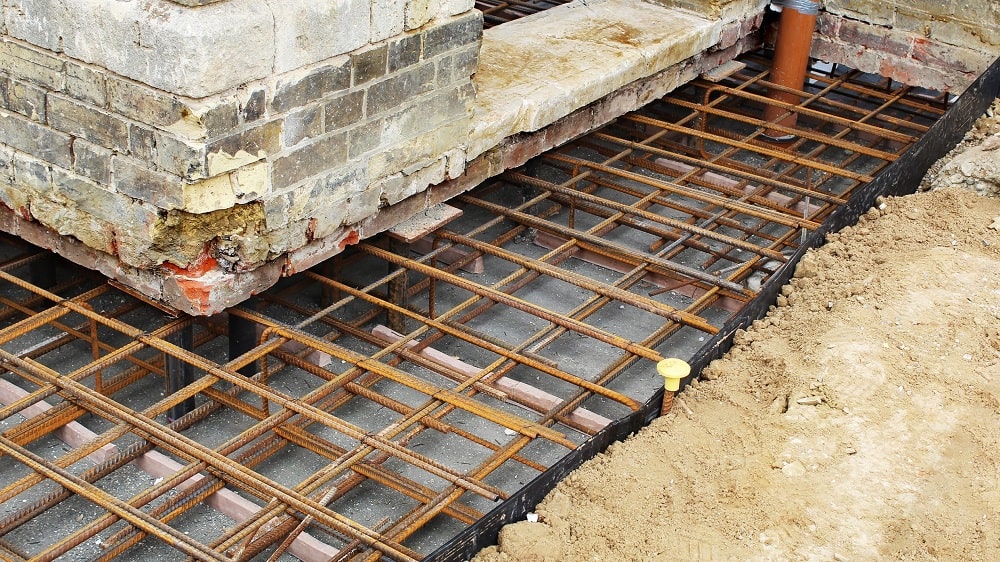One of the most important parts of any house is the foundation. The foundation is responsible for supporting the weight of the house and its contents. If the foundation is not stable, the entire house could collapse. One way to ensure the stability of a foundation is to underpin it. Underpinning is the process of installing new supports for a foundation. If you are considering underpinning your foundation, here is a guide to help you get started.
What Is Underpinning?
An underpinning is a foundation or groundwork. It is the substructure upon which something is built. In construction, it is the lowermost part of a building or structure, typically below the ground or water level. The process of underpinning strengthens the foundation of an existing building or other structure by extending the foundation depth or distributing the load across a greater area. It is necessary to understand the current situation to choose the correct method for underpinning.

Why Is Underpinning Necessary?
Underpinning might be necessary for a number of reasons, such as:
- The original foundation is no longer strong enough and suitable to be used
- Soil conditions under the foundation have changed
- During the design phase, soil characteristics were not properly taken into account
- The building owner wants to construct additional floors
- New neighbouring buildings were constructed and can endanger the current foundations
The Benefits of Underpinning a House
There are many benefits to underpinning a property. Perhaps the most obvious is that it can prevent the house from sinking or caving in. If the foundation is weak or unstable, underpinning can shore it up and help to keep the house stable. Additionally, underpinning can improve drainage around the house, which can help to keep the foundation dry and stable. Finally, underpinning can also improve the appearance of a house by restoring it to its original level.

How Do I Know My Foundations Need Underpinning?
There are several signs that indicate your foundation might need underpinning:
- Cracking bulging walls - this can be caused by a failure to properly tie the wall into the floor or roof structure. The poor condition of the rafters can also be caused by rotting bonded timbers and by a lack of support from the ceiling joists. The wall drops when the ground shrinks because the wall has no support.
- Soil subsidence - shrinking soil can be caused by leaking drains or by trees sucking up moisture. Long roots that spread to look for moisture help trees stay alive.
- Subsidence caused by trees - Trees can suck all the moisture out of the soil around your foundations and their roots can spread under the foundation causing its subsidence.
How Much Does Underpinning Cost?
The cost of underpinning depends mainly on the method used to carry out the work. Different methods have their advantages and disadvantages and the underpinning company should be able to advise the client on the most suitable one for him or her.
Cost of different types of underpinning:
- Mass concrete method - £1,500 / m3
- Beam and base method - £2,000 / m2
- Expanding resin method - £1,200 / m2
- Mini piled method - £2,500 / m2
- Cantilever method - £2,000 / m2
In the UK the average price of underpinning a three-bedroom house is usually between £10,000 and £15,000. The timescale of the project completion is up to six weeks from planning to completion. An underpinning of an average detached house costs more and the range is between £20,000-£35,000.

The Different Types of Underpinning
There are a few different types of underpinning.
Traditional underpinning - it is the most common type and involves creating new footings or foundations at each corner of the existing structure. This type is best suited for buildings that are not severely out of level.
Continuous underpinning - it is used when there is a lot of movement or settlement in the existing structure. In this case, a new footing or foundation is created along the entire length of the building.
Helical underpinning - it is a newer type of underpinning that uses helical piles instead of traditional footings or foundations. Helical piles are screw-type piles that are inserted into the ground using a drilling rig. They are a great option for buildings that are severely out of level or that are located in unstable soil.
Underpinning can also be categorised by the material and method used to carry out the work. Here are some popular underpinning methods:
- Mass concrete underpinning
- Piled underpinning
- Jet grouting
What to Consider When Choosing an Underpinning Company
There are a few things you need to take into account when choosing underpinning contractors. Price is obviously a big factor, but you also need to make sure that the company you choose has a good reputation and is insured. It's also important to check that the company has the correct licenses and is registered with the relevant authorities.
Contact Highlands to discuss your building project with our engineers.

.jpg)
.jpg)
